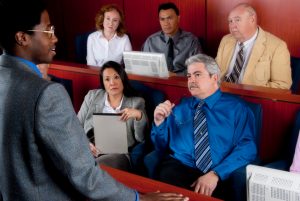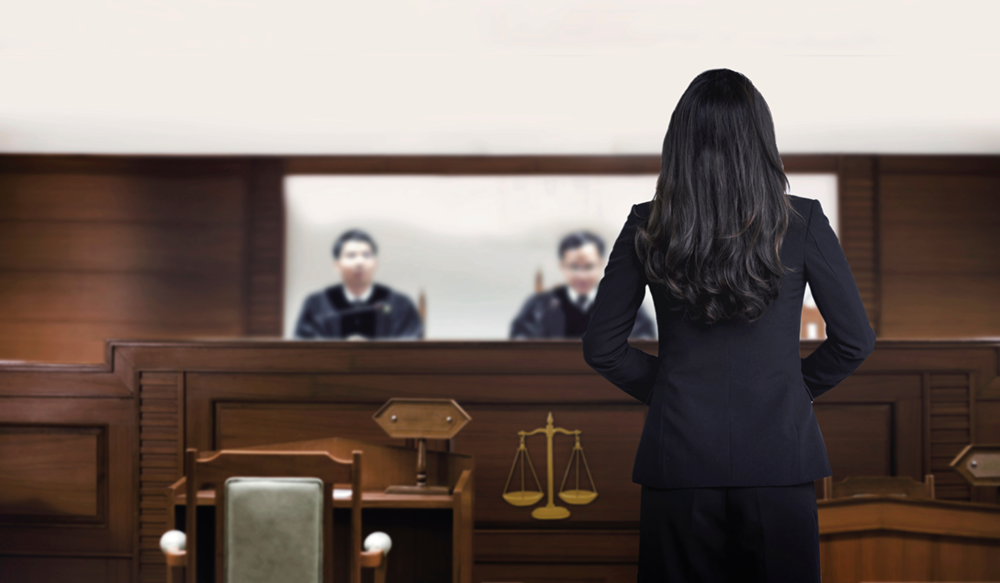From Idea to Courtroom: Actions to Create Effective and Convincing Trial Presentations
From Idea to Courtroom: Actions to Create Effective and Convincing Trial Presentations
Blog Article
Navigating the Complexities of Test Presentations: Tips for Seamless Distribution and Engaging Disagreements
In the realm of lawful procedures, the art of trial discussion stands as a vital component of success. The intricacies fundamental in trial discussions call for a delicate balance of skill, skill, and strategy.

Understanding Test Objectives
To properly navigate a trial, it is essential to have a clear understanding of the purposes that require to be achieved. Prior to entering the court, legal groups must define their objectives and wanted results. These goals act as guiding principles throughout the trial, shaping methods and affecting decision-making processes.
Recognizing test goals entails a comprehensive analysis of the case, legal precedents, and the client's best rate of interests. Trial Presentations. It needs a careful assessment of the realities, identifying key issues, and preparing for possible difficulties. By setting quantifiable and certain goals, attorneys can tailor their presentations and arguments to straighten with the preferred results
Moreover, a clear grip of trial goals enables lawful teams to prioritize proof, witnesses, and lawful disagreements efficiently. It allows for the advancement of a coherent story that resonates with the court and court, enhancing the total situation discussion.

Organizing Proof Properly
Having a clear understanding of test goals lays the foundation for arranging proof efficiently in lawful process - Trial Presentations. By lining up the presentation of evidence with the wanted results of the trial, lawful teams can strengthen their debates and enhance their persuasiveness. One vital aspect of arranging evidence is categorization. Organizing proof based upon styles or significance to certain lawful aspects can aid improve the discussion and make complicated info more absorbable for the court or jury.
Another crucial element in arranging proof successfully is developing a sensible circulation. Presenting proof in a systematic and consecutive manner can help build a compelling story that sustains the legal arguments being made. Furthermore, utilizing visual help such as timelines, graphes, or graphs can additionally enhance the organization of evidence and help in clarifying complicated connections or sequences of events.
Additionally, ensuring that all proof presented is acceptable and pertinent to the instance is crucial. Unnecessary or inadmissible proof can detract from the stamina of the argument and possibly hurt the reliability of the here and now event. For that reason, a precise evaluation and selection process need to be embarked on to consist of only one of the most impactful and legitimately audio evidence in the trial discussion.
Crafting Persuasive Narratives
Crafting compelling stories plays a crucial function in presenting persuasive disagreements throughout lawful proceedings. A well-crafted story has the power to astound the audience, stimulate feelings, and ultimately persuade the choice in favor of the here and now event. When constructing a narrative for a trial presentation, it is important to develop a clear storyline that highlights bottom lines and attaches them in a coherent manner. Begin by detailing the truths of the case in a compelling manner, guaranteeing that the sequence of occasions is very easy to follow. Present characters properly, providing background details that aids the target market recognize their inspirations and actions. In addition, incorporating vivid summaries and interesting language can bring the narrative to life, making it much more memorable for the discretionary. By weaving together proof, statement, and legal arguments right into a influential and cohesive story, legal professionals can effectively support for their clients and raise the probability of a beneficial outcome in the courtroom.
Understanding Aesthetic Help
Efficient use of aesthetic aids is crucial to boosting the influence and quality navigate to these guys of test presentations. Visual aids, when made use of purposefully, have the power to streamline intricate details, enhance vital factors, and leave a lasting impact on he said the court and court. To understand aesthetic aids in trial discussions, it is critical to make certain that they are clear, concise, and pertinent to the debates being made.
When including aesthetic help, such as charts, timelines, pictures, or graphs, right into a trial discussion, it is necessary to maintain them visually appealing yet professional. The visuals need to enhance the verbal debates, providing a visual representation of the details being gone over without frustrating the audience with unnecessary details.
Moreover, experimenting the aesthetic help beforehand is crucial to guarantee a smooth delivery throughout the test. Familiarizing oneself with the web content, transitions, and timings of each visual aid can help preserve the circulation of the discussion and prevent technical problems that might arise.
Supplying Impactful Closing Debates
A compelling closing argument offers as the conclusion of a trial discussion, encapsulating the core narrative and persuading the court and court in the direction of a favorable choice. To supply an impactful closing debate, it is essential to succinctly summarize bottom lines, highlight the staminas of your instance, and attend to any kind of weak points in a tactical way. Begin by detailing the primary disagreements that support your customer's setting, emphasizing why the proof provided throughout the test supports your story. It is vital to develop a sense of communication and clearness, guiding the discretionary in the direction of the preferred address conclusion.
In addition, incorporating sob story can further enhance your closing debate. By connecting and humanizing the case on an individual level with the decision-makers, you can evoke empathy and understanding, affecting their assumption of the facts offered. Additionally, repeating the legal standards that have to be met for a beneficial ruling can reinforce the credibility of your placement. Inevitably, a well-crafted closing debate need to leave a long-term impact, engaging the discretionary to regulation in your customer's support.
Verdict
To conclude, understanding trial discussions includes understanding goals, organizing proof, crafting narratives, using aesthetic help, and providing impactful closing debates. By carrying out these strategies successfully, lawyers can provide their instance effortlessly and make compelling debates in the courtroom. It is vital to browse the complexities of test presentations with accuracy and skill to attain success in lawful proceedings.
By lining up the discussion of proof with the wanted outcomes of the trial, lawful groups can reinforce their arguments and enhance their persuasiveness (Trial Presentations). To grasp visual aids in test discussions, it is crucial to make sure that they are clear, concise, and appropriate to the disagreements being made
A compelling closing disagreement serves as the conclusion of a test discussion, enveloping the core story and convincing the court and jury towards a favorable choice. Begin by outlining the major arguments that sustain your customer's position, stressing why the proof provided throughout the trial sustains your narrative.In conclusion, grasping test presentations involves comprehending goals, arranging proof, crafting stories, using visual help, and delivering impactful closing arguments.
Report this page